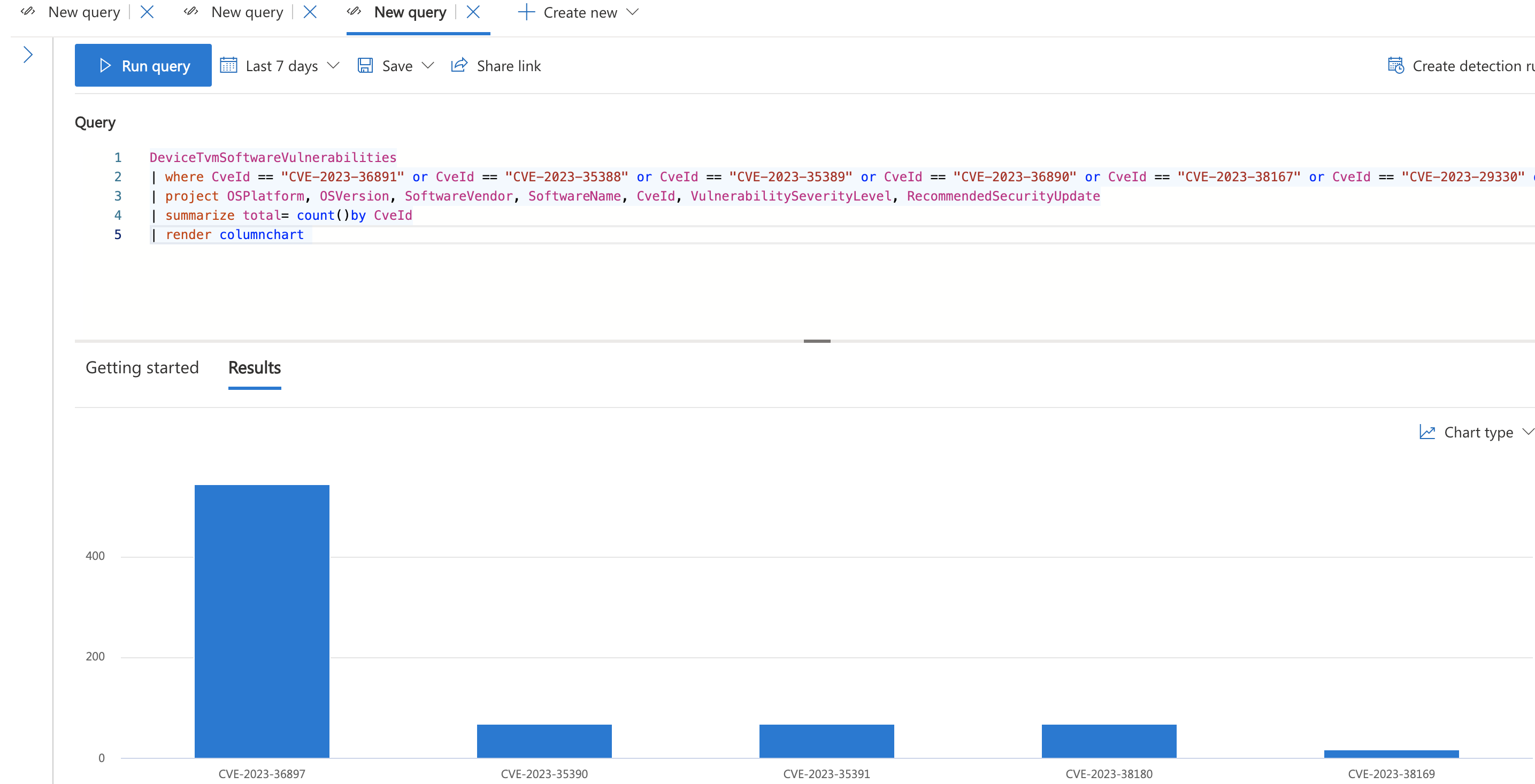I build a quick script to gather CVEs from any webpage and build your own Advanced Hunting kusto query in Defender:
Script
You can download the script here
import requests
import re
import argparse
def extract_cves(url):
response = requests.get(url)
if response.status_code != 200:
raise Exception(f"Failed to get the content. HTTP Status: {response.status_code}")
content = response.text
cve_pattern = re.compile(r'CVE-\d{4}-\d{4,7}')
cves = cve_pattern.findall(content)
cves = list(set(cves))
return cves
def main():
parser = argparse.ArgumentParser(description="Extract CVEs.")
parser.add_argument("-url", required=True, help="URL to extract CVEs from")
args = parser.parse_args()
cve_list = extract_cves(args.url)
condition_string = " or ".join([f'CveId == "{cve}"' for cve in cve_list])
# Kusto query Advanced Hunting (adapt what you need)
query = f"""
DeviceTvmSoftwareVulnerabilities
| where {condition_string}
| project DeviceName, OSPlatform, OSVersion, SoftwareVendor, SoftwareName, CveId, VulnerabilitySeverityLevel, RecommendedSecurityUpdate
"""
print(query)
if __name__ == "__main__":
main()
Usage:
python script_name.py -url <URL>
That way you can easily get the CVE from any Webpage and build your own query on Defender:
Here you quikly get an overview of amount of impacted Devices for every CVE
